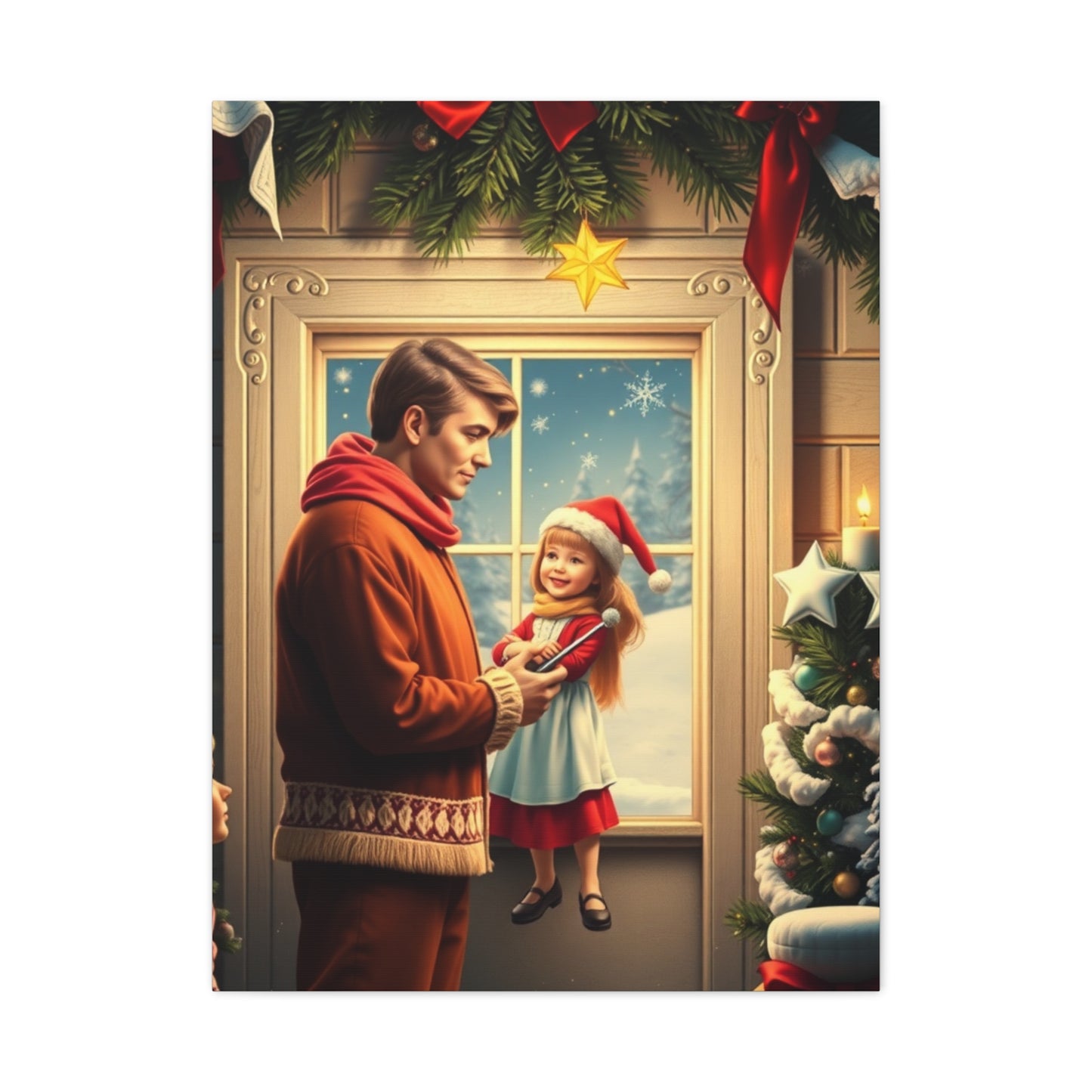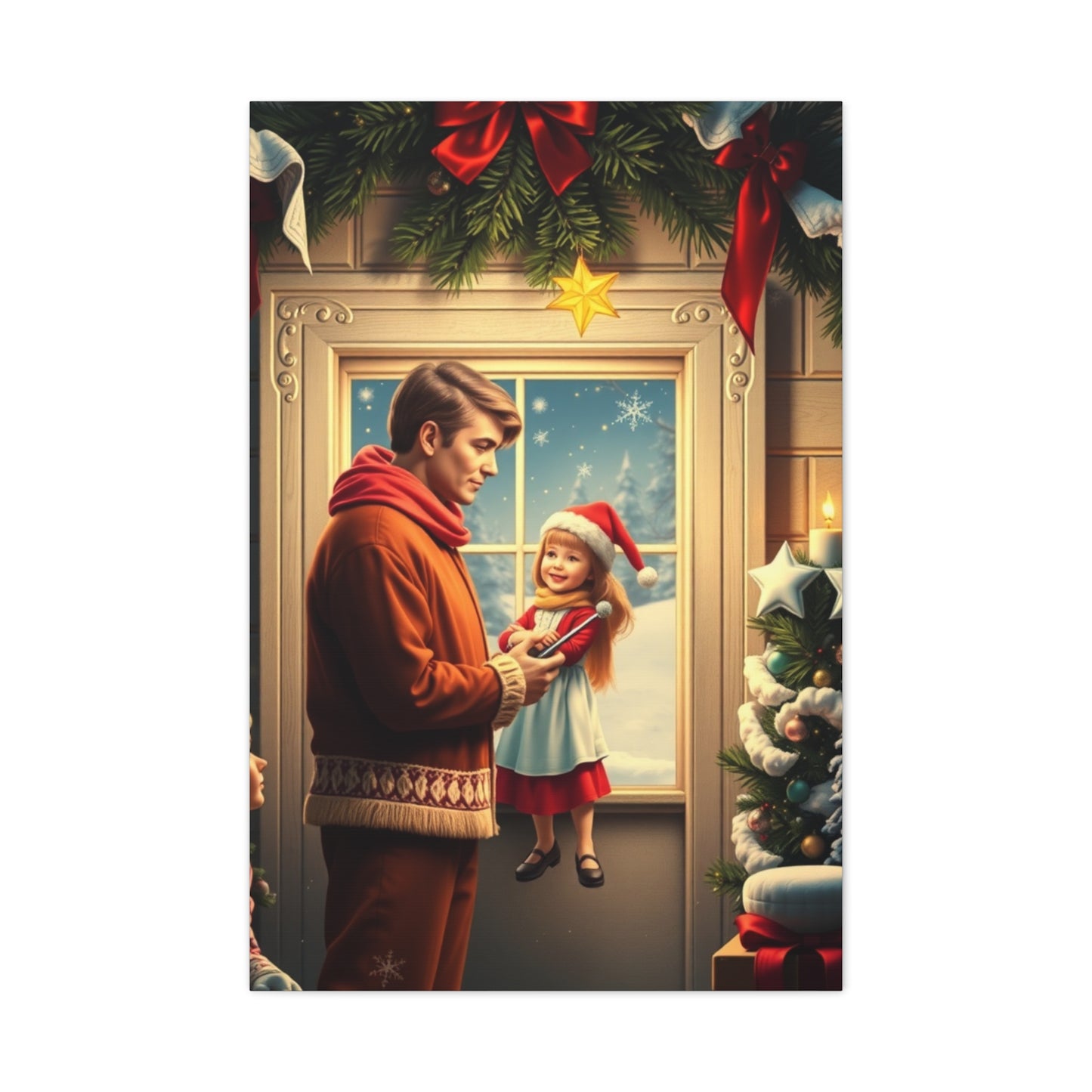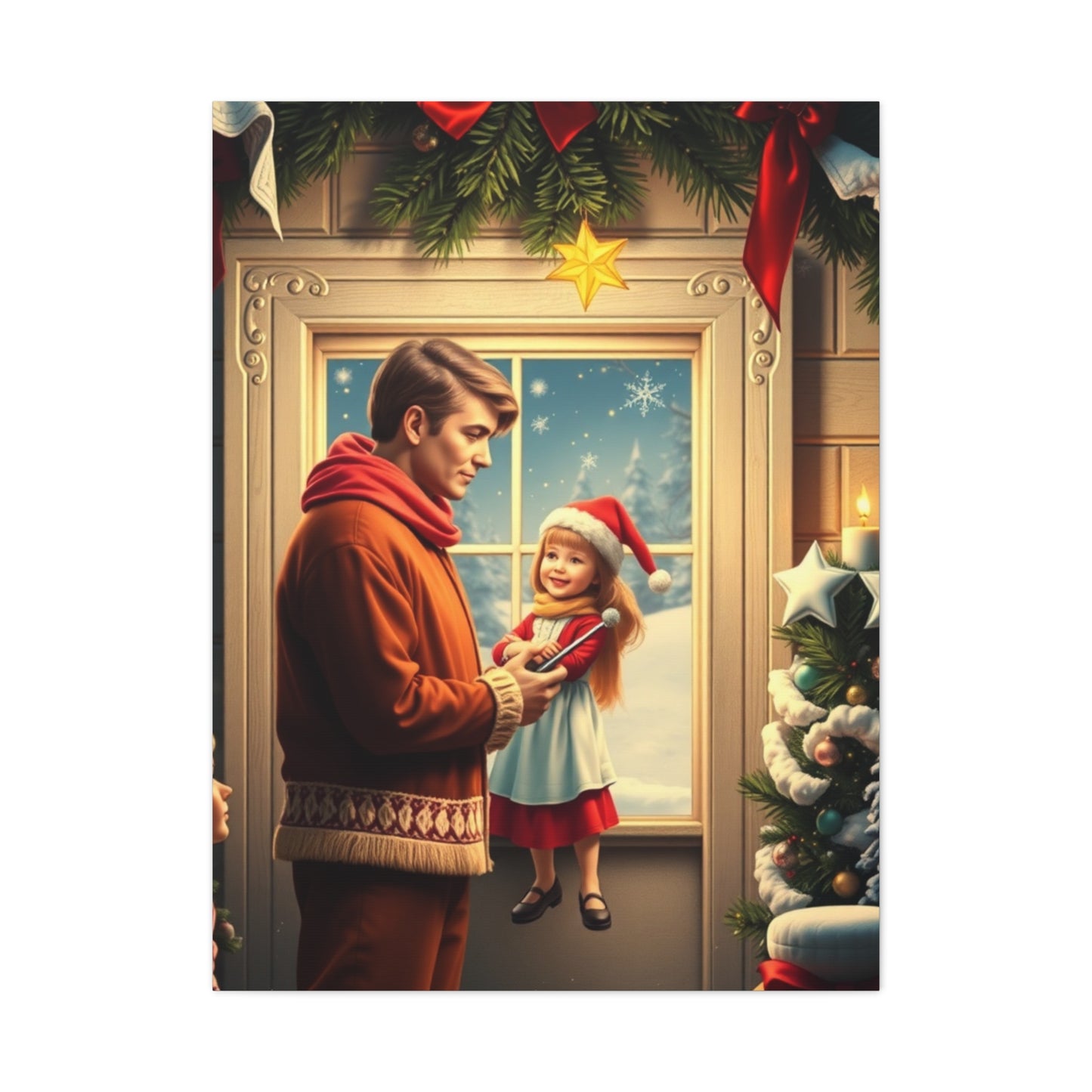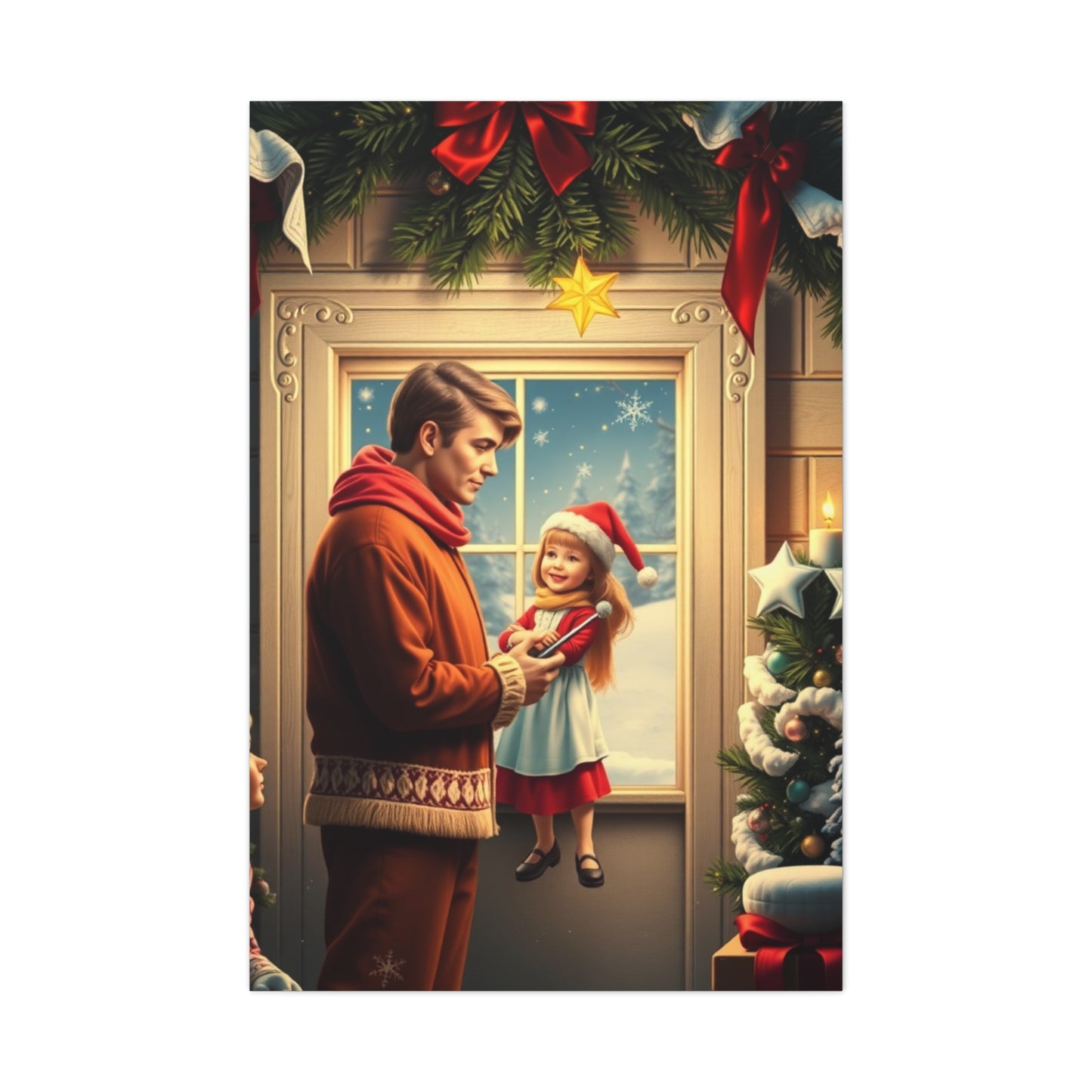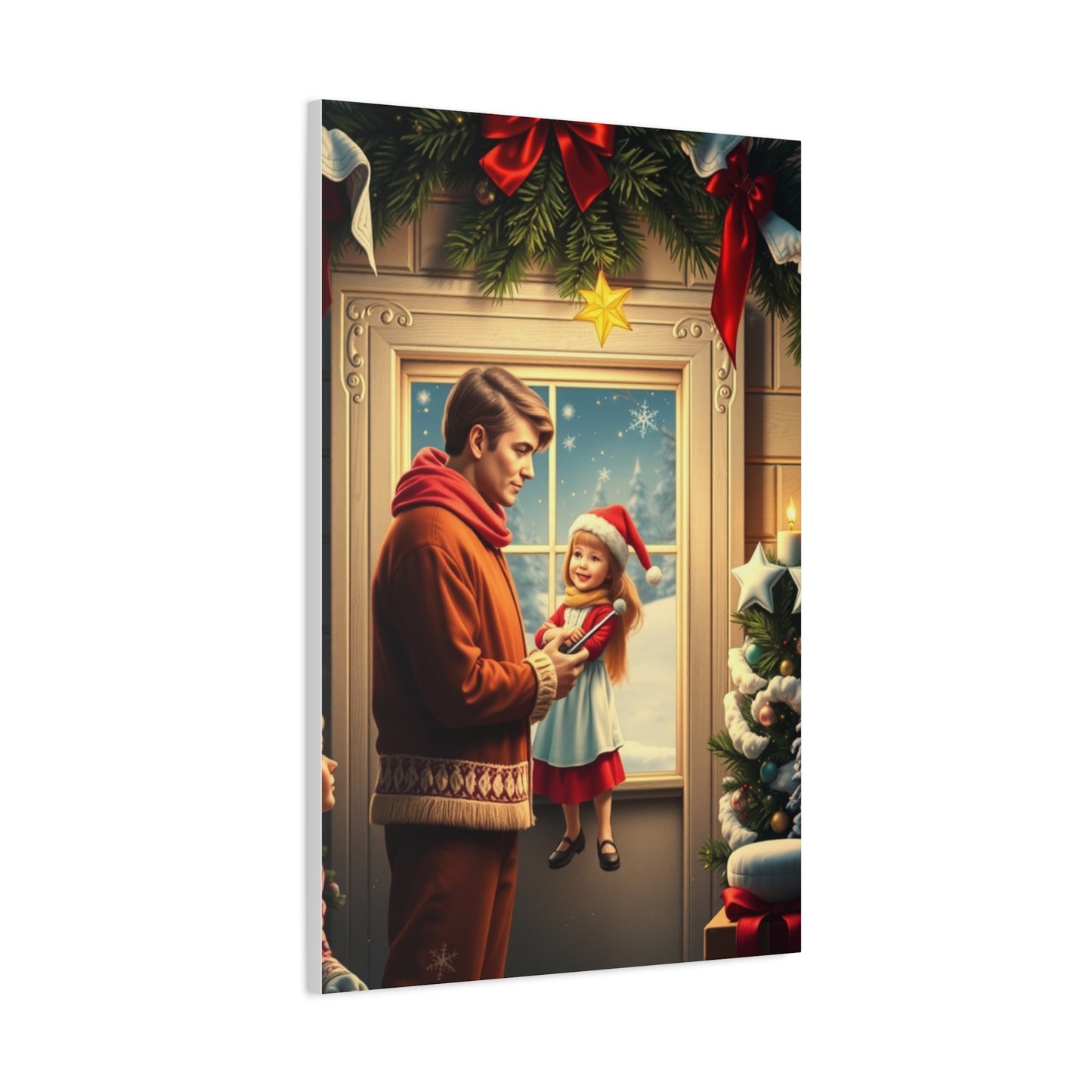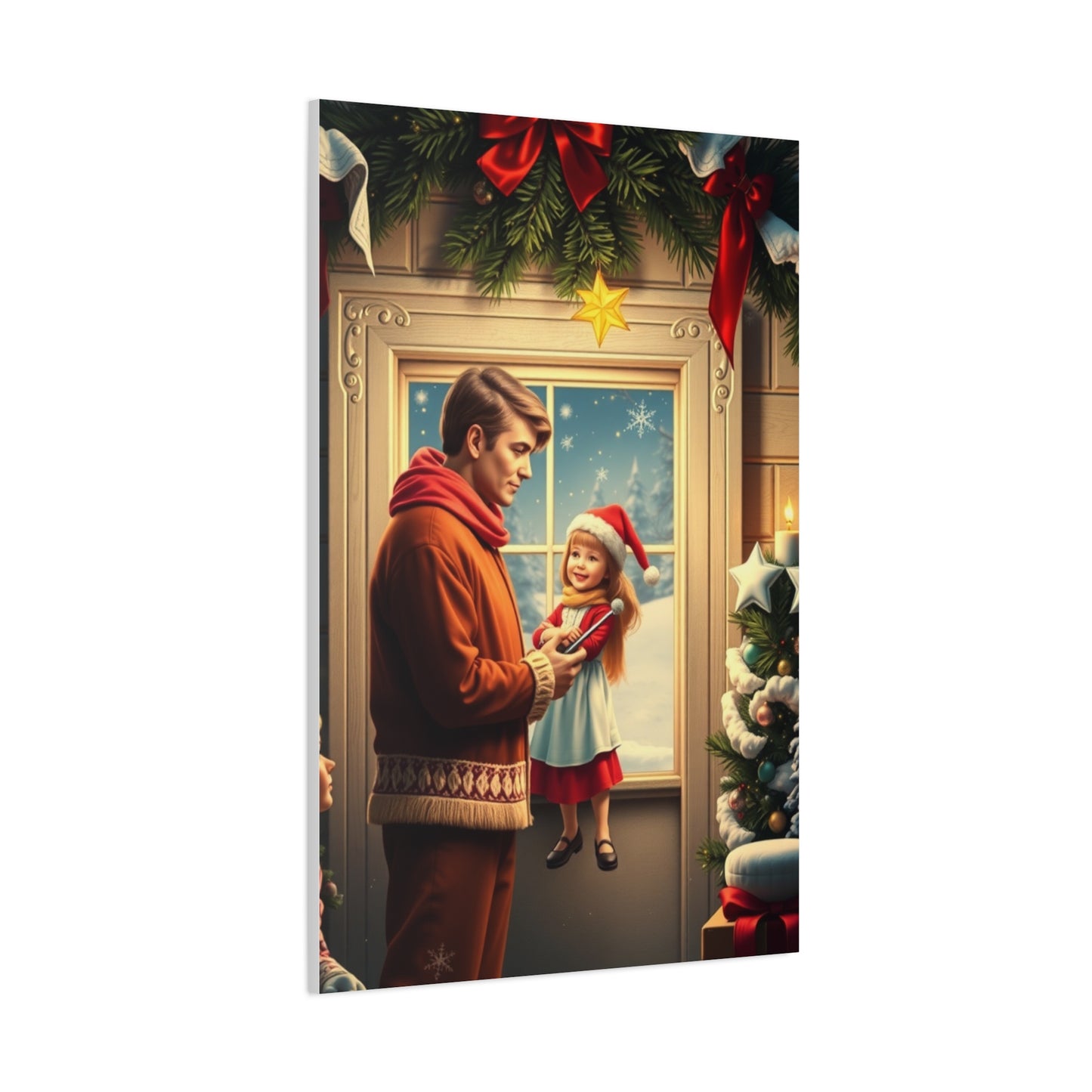Rockwell’s Festive Nostalgia: Celebrating Timeless Seasonal Joy and Cherished Memories
Norman Rockwell remains one of America's most beloved illustrators, whose seasonal creations continue to touch hearts decades after their original publication. His holiday illustrations capture moments of genuine human connection, celebration, and warmth that transcend generational boundaries. Through meticulous attention to detail and an unparalleled ability to portray authentic emotion, Rockwell created a visual language that speaks to the universal experiences of celebration, togetherness, and joy during the most wonderful time of the year. His works have become synonymous with the season itself, adorning homes, greeting cards, and collections worldwide, serving as powerful reminders of what makes the holidays truly special.
The Influence of Americana in Rockwell's Festive Works
Norman Rockwell's seasonal illustrations are deeply rooted in American culture, reflecting the values, traditions, and everyday experiences of ordinary people during the mid-twentieth century. His paintings captured an idealized yet recognizable version of American life, where neighbors knew each other by name, communities gathered for celebrations, and families prioritized time together during the holiday season. This distinctly American perspective infused his festive works with a sense of place and cultural identity that resonated powerfully with viewers across the nation.
The artist's commitment to portraying authentic American experiences meant conducting extensive research and observation. Rockwell frequently used his neighbors, friends, and family members as models, ensuring that the faces in his paintings reflected real people with genuine expressions. This approach gave his holiday illustrations an immediacy and relatability that studio-manufactured images could never achieve. Whether depicting a family preparing their holiday meal or children eagerly awaiting Santa's arrival, Rockwell's scenes felt familiar because they were drawn from lived experiences rather than abstract ideals.
Rockwell's festive works often featured quintessentially American settings: small-town main streets decorated with garlands and lights, colonial-style homes with wreaths on the doors, neighborhood churches hosting seasonal services, and local shops bustling with last-minute shoppers. These backdrops weren't merely decorative elements but essential components of the narratives he constructed. They grounded his holiday scenes in a recognizable American landscape that viewers could immediately identify with, even if their own communities looked slightly different.
The cultural values embedded in Rockwell's seasonal paintings reflected the priorities of mid-century American society: family cohesion, community involvement, religious observance, patriotism, and optimism about the future. His holiday illustrations frequently showed multiple generations gathering together, emphasizing the importance of maintaining family bonds across age groups. Grandparents, parents, and children all played important roles in these seasonal narratives, highlighting the continuity of tradition from one generation to the next.
Rockwell's depictions of holiday charity and community support reflected the American value of helping those less fortunate. His illustrations occasionally showed acts of kindness during the season, such as neighbors bringing food to elderly residents or communities rallying to support families experiencing hardship. These themes reinforced the idea that the holiday season was about more than personal celebration; it was also an opportunity to strengthen community bonds and demonstrate compassion for others.
The artist's festive works also reflected America's relationship with consumerism and material culture during the post-war era. His paintings depicted shopping excursions, gift exchanges, and the excitement surrounding new toys and presents. Rather than critiquing this commercialization, Rockwell portrayed it as part of the season's joy, recognizing that gift-giving represented thoughtfulness and affection rather than mere materialism. His illustrations of children examining department store windows or families admiring wrapped presents captured the innocent excitement that material surprises could generate.
Religious themes appeared throughout Rockwell's holiday portfolio, reflecting Christianity's central role in American seasonal celebrations. His depictions of nativity scenes, church services, and families praying before meals acknowledged the spiritual foundations of the holiday while making these observances feel approachable and personal rather than formal or distant. Rockwell's treatment of religious elements emphasized their role in bringing people together and providing meaning to seasonal traditions.
The optimism pervading Rockwell's festive illustrations reflected broader American attitudes during much of his career. Even during challenging historical periods, his holiday paintings projected hope, resilience, and faith in fundamental goodness. This optimistic perspective wasn't naïve but rather represented a conscious choice to highlight the positive aspects of human nature and community life. His seasonal works reminded viewers that despite difficulties, there were always reasons for gratitude and celebration.
Rockwell's attention to period-specific details in clothing, technology, and home furnishings provides contemporary viewers with windows into mid-century American life. His illustrations documented how people dressed for holiday gatherings, what kinds of decorations they used, how they prepared seasonal meals, and what activities filled their celebrations. These details weren't merely nostalgic; they were accurate historical records of American cultural practices during specific decades.
Rockwell's Art and the Spirit of Community During Holidays
Few artists have captured the essence of community connection during the holiday season as effectively as Norman Rockwell. His seasonal illustrations consistently emphasized how celebrations brought people together, strengthening social bonds and creating shared experiences that defined communities. Rather than focusing solely on individual families, Rockwell frequently depicted neighbors, friends, and even strangers interacting in ways that highlighted the season's power to unite people across differences.
Rockwell's community-centered holiday paintings often featured public gatherings: town square celebrations with decorated trees, caroling groups moving through neighborhoods, church services with packed pews, and community dinners where residents shared food and fellowship. These scenes emphasized that holiday joy wasn't just a private family experience but something magnified when shared with the broader community. His illustrations suggested that part of what made the season special was its ability to bring people out of their homes and into shared public experiences.
The artist's depiction of small-town life during the holidays portrayed communities where social connections remained strong and neighbors maintained genuine interest in each other's wellbeing. His paintings showed shopkeepers who knew their customers by name, postal workers delivering cards with friendly greetings, and residents stopping to chat on snow-covered sidewalks. These interactions, though seemingly minor, communicated that holiday season occurred within networks of relationships that extended beyond immediate family circles.
Rockwell frequently portrayed intergenerational community connections in his holiday works. His illustrations showed elderly residents being included in seasonal activities, young people assisting older neighbors with preparations, and children bringing joy to isolated community members. These depictions emphasized that healthy communities ensured all members, regardless of age or circumstance, could participate in seasonal celebrations and feel valued during this special time.
The sense of shared responsibility pervading many of Rockwell's community-focused holiday paintings reflected values of mutual support and collective effort. His illustrations occasionally depicted neighbors helping each other with seasonal preparations: assisting with decorating, sharing ingredients for holiday meals, or collectively organizing community events. These scenes communicated that the season's magic emerged partly from people's willingness to contribute to collective joy rather than focusing solely on private celebration.
Rockwell's treatment of community diversity, while limited by the cultural constraints of his era, sometimes showed people from different socioeconomic backgrounds interacting during holiday gatherings. His illustrations might depict wealthy and working-class families sharing pews at holiday services or children from various backgrounds playing together in snowy parks. While his work didn't challenge the social hierarchies of his time, it did suggest that the holiday season could temporarily bridge some social divisions through shared celebration.
Public traditions featured prominently in Rockwell's community-centered holiday paintings. He depicted annual rituals that brought communities together year after year: lighting the town tree, organizing holiday parades, hosting seasonal concerts, and maintaining local customs unique to specific communities. These traditions, as Rockwell portrayed them, served as anchors of community identity, providing continuity across years and connecting current celebrations with past generations who had participated in the same rituals.
The artist's illustrations of community charitable activities during the holidays emphasized collective responsibility for ensuring all community members could enjoy the season. Rockwell occasionally depicted organized efforts to support families experiencing hardship: collecting donations, delivering food baskets, organizing toy drives, or visiting residents in hospitals or care facilities. These scenes reinforced the idea that true holiday spirit involved expanding circles of care beyond immediate families to encompass entire communities.
Rockwell's depictions of community gathering places during the holidays imbued these locations with warmth and significance. The corner drugstore, the town diner, the local church, the neighborhood school, and the community center all appeared in his seasonal illustrations as vital social hubs where relationships were maintained and strengthened. His treatment of these locations suggested that physical places where people regularly encountered neighbors and friends played essential roles in sustaining community bonds.
Behind the Scenes: Creating Rockwell's Festive Nostalgia
Norman Rockwell's creative process for developing his beloved holiday illustrations involved meticulous planning, extensive research, and collaborative work with models and assistants. Understanding how he constructed these iconic images reveals the extraordinary effort behind works that appear spontaneous and natural. Rockwell approached each painting as a complex project requiring careful attention to composition, lighting, expression, costume, and countless other details that contributed to the final result.
The artist typically began with conceptual development, brainstorming ideas that would resonate with viewers while offering opportunities for compelling visual storytelling. He maintained extensive notes and sketches capturing potential scenes, expressions, and narrative concepts. During the holiday season, Rockwell observed people's behaviors, interactions, and emotional responses, storing these observations for future reference. This research phase ensured his paintings reflected authentic experiences rather than imagined scenarios.
Once Rockwell settled on a concept, he created detailed preliminary sketches exploring various compositional approaches. These sketches allowed him to experiment with figure placement, perspective, and visual balance before committing to a final design. He often created multiple versions of the same scene, subtly adjusting elements until he achieved exactly the right combination of visual interest and narrative clarity. This iterative process demonstrated his commitment to excellence and his unwillingness to settle for anything less than optimal results.
Casting appropriate models constituted another crucial phase in Rockwell's creative process. The artist maintained relationships with numerous residents in his communities who served as regular models, but he also sought out specific individuals whose physical characteristics or expressive capabilities matched his vision for particular characters. For holiday illustrations, he particularly needed models who could convincingly portray emotions like joy, surprise, anticipation, and contentment. He conducted extensive casting sessions, photographing potential models in various poses and expressions.
Photography played an essential role in Rockwell's working method. He used cameras extensively to capture reference material, photographing models in poses matching his preliminary sketches. These photographs served as crucial references during the painting process, allowing him to accurately render anatomy, clothing folds, lighting effects, and facial expressions. However, Rockwell never simply copied photographs; he used them as foundations upon which he built more refined and idealized compositions through his painting process.
The artist's studio was filled with props, costumes, and reference materials collected specifically for creating authentic period details in his paintings. For holiday illustrations, Rockwell maintained collections of vintage ornaments, wreaths, period-appropriate clothing, furniture, kitchen implements, toys, and countless other objects that might appear in seasonal scenes. His attention to these details ensured that every element in his paintings contributed to the overall atmosphere and historical accuracy of the work.
Rockwell's painting process itself was methodical and technically accomplished. He typically worked in oils, building up layers gradually to achieve rich colors and subtle tonal transitions. His technique combined careful drawing skills with painterly brushwork, allowing him to render precise details while maintaining overall unity and atmosphere. The lighting in his holiday paintings often glowed with warmth, requiring sophisticated understanding of how light behaves and how to represent its effects through paint.
Collaboration with art directors and editors at publications like The Saturday Evening Post shaped many of Rockwell's holiday illustrations. These professionals provided feedback on preliminary sketches, suggested modifications to make images more effective for reproduction, and occasionally requested changes to better align with editorial content. While Rockwell maintained artistic control over his work, he remained responsive to professional input, recognizing that his illustrations needed to function effectively in printed publications.
The artist's perfectionism meant he frequently reworked sections of paintings that didn't meet his exacting standards. He might repaint a figure's expression multiple times to capture exactly the right emotional nuance, adjust lighting effects to enhance atmosphere, or modify background details to strengthen overall composition. This willingness to revise and refine distinguished Rockwell's work from that of artists content with adequate rather than exceptional results.
Time constraints often influenced Rockwell's working process, particularly when creating illustrations for specific publication deadlines. Holiday-themed works typically needed completion weeks or months before their scheduled publication dates, requiring careful project management and efficient working methods. Despite these pressures, Rockwell maintained his commitment to quality, occasionally working extended hours to ensure each painting met his standards before submission.
Iconic Characters in Rockwell's Holiday Paintings
Norman Rockwell populated his holiday illustrations with memorable characters who have become beloved figures in American visual culture. These weren't generic types but carefully individualized personalities whose expressions, postures, and interactions told rich stories about human experiences during the season. Rockwell's genius lay partly in his ability to create characters who felt simultaneously specific and universal, allowing viewers to recognize both particular individuals and broader human types within the same figures.
Children occupied central positions in many of Rockwell's holiday paintings, their faces radiating excitement, wonder, curiosity, and innocent joy. The artist excelled at capturing childhood psychology, portraying kids as they actually behaved rather than as idealized angels. His holiday children might be caught sneaking peeks at presents, struggling to maintain patience during long adult conversations, or experiencing genuine awe at seasonal magic. These honest depictions made Rockwell's child characters feel authentic and relatable rather than saccharine.
Santa Claus appeared throughout Rockwell's holiday portfolio, but the artist's treatment of this iconic figure varied considerably. Sometimes he depicted Santa as a department store performer whose costume didn't quite fit properly, acknowledging the commercial aspects of holiday traditions. Other times, Rockwell portrayed Santa with magical realism, suggesting the character's mythical qualities while maintaining enough grounding in physical reality to keep the image believable. His Santa figures ranged from jolly and rotund to tired and overworked, reflecting different aspects of the character's cultural meaning.
Grandparents featured prominently in Rockwell's multigenerational holiday scenes, often serving as keepers of tradition and sources of wisdom and warmth. His elderly characters displayed genuine personality rather than functioning as mere stereotypes. A grandmother might show determination while wrestling with a stubborn turkey, amusement at her grandchildren's antics, or quiet contentment while observing family celebrations. Rockwell's respect for elderly subjects ensured they maintained dignity and agency within his holiday narratives.
Fathers in Rockwell's holiday paintings exhibited a range of characteristics beyond simple patriarchal authority. His dad characters might struggle with assembling toys on late evenings, express bemusement at holiday chaos, display tenderness toward their children, or participate enthusiastically in seasonal activities. These varied depictions showed men engaging emotionally with family life and embracing the domestic aspects of holiday celebration, presenting a more nuanced vision of fatherhood than many contemporary images offered.
Mothers appeared as organizational centers of holiday activity in many Rockwell illustrations, but they also displayed individuality and emotional complexity. His maternal figures might show exhaustion mixed with satisfaction after completing holiday preparations, amusement at family dynamics, or absorbed concentration while attending to seasonal tasks. Rockwell avoided reducing mothers to one-dimensional caregivers, instead portraying them as complete individuals navigating the challenges and rewards of orchestrating family celebrations.
Community figures like shopkeepers, postal workers, ministers, teachers, and town officials populated Rockwell's holiday scenes, connecting private family celebrations to broader social contexts. These characters demonstrated how professional roles continued during the season, often with special holiday adaptations. A postal worker might wear a Santa hat while delivering cards, or a shopkeeper might go beyond normal service to help a customer find the perfect gift. These supporting characters enriched Rockwell's holiday narratives by showing how the season influenced all aspects of community life.
Rockwell occasionally included characters who appeared isolated or excluded from mainstream celebrations, using these figures to explore themes of loneliness and inclusion during the season. An elderly person alone in an apartment, a worker far from family, or a child pressed against a window watching others celebrate might appear in his paintings. However, Rockwell typically resolved these potential sadnesses through acts of community inclusion, showing how others reached out to ensure no one remained alone during this special time.
Animal characters, particularly dogs, appeared frequently in Rockwell's holiday paintings, adding humor, warmth, and additional narrative interest. His animals displayed distinct personalities and often seemed to comment on human activities with amused tolerance or enthusiastic participation. A dog might be caught stealing food from an unattended table, wearing a ridiculous holiday costume, or sleeping contentedly near a warm fire while family activities swirled around. These animal characters humanized scenes and provided opportunities for gentle comedy.
The expressions Rockwell captured on his characters' faces constituted one of his greatest artistic achievements. Each individual in his holiday paintings displayed a specific emotional state conveyed through subtle details of eyes, mouths, and overall facial configuration. A child's anticipation, an adult's tender amusement, an elderly person's contentment, or a dog's hopeful attention to food all registered clearly through Rockwell's skillful rendering of expression. This attention to emotional specificity allowed viewers to read complex narratives within single images.
Rockwell's Use of Color to Evoke Festive Feelings
Color played a crucial role in Norman Rockwell's ability to evoke specific emotional responses in his holiday illustrations. The artist possessed sophisticated understanding of color theory and applied this knowledge deliberately to create paintings that radiated warmth, joy, and seasonal atmosphere. His color choices weren't arbitrary but carefully calculated to enhance mood, guide viewer attention, and reinforce the emotional content of each scene.
Warm color palettes dominated Rockwell's holiday paintings, with rich reds, golden yellows, and glowing oranges creating feelings of comfort and coziness. These warm hues appeared in firelight, candlelight, indoor lighting, flushed cheeks, and seasonal decorations throughout his festive works. The prevalence of warm colors communicated physical and emotional warmth, suggesting that the holiday season provided refuge from cold external environments and created atmospheres of emotional safety and contentment.
Red functioned as both a symbolic and compositional element in Rockwell's holiday illustrations. The color's association with the season appeared in Santa's costume, holiday decorations, wrapped gifts, festive clothing, and seasonal foods. Beyond its symbolic meanings, red served compositional purposes by creating focal points that drew viewer attention to important narrative elements. Rockwell carefully balanced red accents throughout his compositions, ensuring the color enhanced rather than overwhelmed overall visual harmony.
Rockwell's treatment of white and cool colors provided essential contrast to his warm palettes, preventing his holiday paintings from becoming monotonous or overwhelming. Snow scenes featured subtle variations in white and blue tones, with shadows displaying hints of lavender, blue, and gray. These cool colors suggested the physical environment outside warm homes while creating visual relief that made warm interior colors appear even more inviting by contrast.
Golden and amber tones appeared frequently in Rockwell's depictions of artificial lighting in holiday scenes. Lamps, candles, fireplaces, and even early electric lights glowed with warm golden hues that suffused entire compositions with gentle radiance. This warm lighting created intimate atmospheres and suggested the soft focus that memory often applies to cherished experiences. The golden quality of light in Rockwell's holiday paintings contributed significantly to their nostalgic emotional resonance.
Green featured prominently in Rockwell's holiday works through evergreen decorations, wreaths, garlands, and trees. His greens ranged from deep forest tones to brighter emerald shades, providing natural color notes that balanced his warmer reds and golds. The presence of living greenery in winter scenes carried symbolic associations with renewal and persistence of life during dormant seasons, subtly reinforcing themes of hope and continuity.
Rockwell demonstrated sophisticated color modulation within individual elements of his paintings. Rather than using flat, uniform colors, he built up subtle variations in hue, value, and intensity that created richness and visual interest. A red garment might contain hints of orange in highlights and purple in shadows, while maintaining its overall red identity. This nuanced approach to color resulted in paintings that rewarded extended viewing as observers discovered increasingly subtle chromatic relationships.
The artist's color choices reflected period-appropriate aesthetics while maintaining timeless appeal. His palette referenced the actual colors available in clothing, decorations, and commercial products during mid-century America without becoming dated or overly specific to particular decades. This balance between historical accuracy and timeless beauty has allowed Rockwell's holiday illustrations to remain visually appealing to contemporary audiences despite changing color preferences across decades.
Skin tones in Rockwell's holiday paintings displayed remarkable variety and subtlety, with each character's complexion rendered through carefully calibrated mixtures of warm and cool colors. He avoided generic "flesh tone" approaches, instead observing how lighting conditions, emotional states, physical activities, and individual characteristics influenced skin appearance. Flushed cheeks from cold weather or excitement, pale complexions on tired adults, and glowing healthy tones on children all registered through Rockwell's attentive color rendering.
Background colors in Rockwell's holiday illustrations typically remained relatively subdued compared to foreground elements, ensuring that characters and primary narrative components maintained visual prominence. However, even background areas displayed Rockwell's characteristic attention to color relationships, with subtle variations preventing any areas from appearing dead or uninteresting. This hierarchical approach to color intensity created clear compositional structures while maintaining overall visual richness.
Capturing Childhood Wonder in Rockwell's Holiday Art
Norman Rockwell possessed an exceptional ability to portray childhood psychology, particularly the unique quality of wonder that children experience during the holiday season. His holiday illustrations featuring young people captured authentic moments of anticipation, discovery, belief, and joy that resonated deeply with viewers who remembered their own childhood experiences or observed these qualities in young people around them. Rockwell's children weren't idealized cherubs but recognizable kids displaying genuine emotions and behaviors.
The artist frequently depicted children's faces during moments of revelation or realization, capturing the precise instant when wonder registered in their expressions. Eyes widening, mouths opening slightly, and entire bodies leaning forward with eager attention, Rockwell's child characters displayed the total absorption that young people bring to experiences they find genuinely amazing. These moments of captured wonder became emotional centers of his holiday paintings, radiating outward to influence how viewers interpreted entire compositions.
Rockwell understood that childhood anticipation involves a distinctive temporal experience where time seems to slow or stop while waiting for anticipated events. His illustrations sometimes portrayed children counting down days on calendars, watching windows for expected arrivals, or sitting in patient (or impatient) poses while adults completed necessary preparations. These depictions of anticipation acknowledged that for children, the waiting and imagining constituted significant parts of the holiday experience, not merely obstacles to be endured before "real" celebrations began.
The artist captured moments when children discovered unexpected delights: finding presents, seeing seasonal decorations for the first time, tasting special treats, or encountering surprising visitors. These discovery scenes emphasized how the holiday season created opportunities for small revelations that children experienced with disproportionate intensity. Rockwell honored these moments by treating them as genuinely significant events rather than trivial occurrences barely worth noticing.
Rockwell's depiction of childhood belief systems regarding holiday magic reflected his understanding that young people occupied different conceptual worlds than adults. His illustrations sometimes portrayed children's perspectives on Santa Claus, showing their absolute conviction in the reality of holiday magic despite gathering evidence that might suggest alternative explanations. The artist treated childhood belief with respect rather than condescension, acknowledging that these belief systems served important developmental and emotional functions.
Physical expressions of holiday excitement appeared throughout Rockwell's child-centered paintings: jumping, running, dancing, spinning, clapping, and other kinetic responses to joy. His child characters couldn't contain their enthusiasm in static poses but needed physical outlets for emotional intensity. These depictions of embodied joy captured something essential about childhood experiences of happiness, which involve entire bodies rather than remaining confined to facial expressions or verbal statements.
Rockwell also portrayed quieter childhood responses to holiday experiences: contentment, absorption, contemplation, and gentle satisfaction. Not all his child characters displayed explosive enthusiasm; some appeared peacefully engaged with new toys, thoughtfully examining gifts, or quietly observing family activities with pleased expressions. These gentler portrayals acknowledged that childhood wonder encompasses a range of emotional tones rather than consisting solely of maximum excitement.
The artist occasionally depicted moments when childhood expectations met disappointing realities: gifts that didn't match hopes, activities that proved less exciting than anticipated, or situations where adult concerns intruded on children's enjoyment. However, even when portraying these minor disappointments, Rockwell typically suggested resilience and the rapid recovery characteristic of childhood, where momentary setbacks give way quickly to new interests and renewed enthusiasm.
Sibling dynamics during holiday celebrations appeared in numerous Rockwell paintings featuring children, showing how young people shared, competed for attention, collaborated, and occasionally squabbled during seasonal activities. These realistic portrayals of sibling relationships added authenticity to his holiday scenes, acknowledging that family celebrations included normal childhood interactions alongside idealized moments of perfect harmony.
Rockwell captured how children served as emotional catalysts in multigenerational holiday gatherings, their enthusiasm reawakening adults' capacity for seasonal joy. His illustrations sometimes showed adults watching children with expressions of tender amusement or remembered recognition, suggesting that observing childhood wonder allowed grown people to reconnect with their own younger selves. These intergenerational emotional exchanges added depth to Rockwell's holiday narratives, showing how celebrations renewed connections across age groups.
Rockwell's Festive Nostalgia in Contemporary Holiday Cards
Norman Rockwell's holiday illustrations have enjoyed remarkably enduring popularity in contemporary greeting card production, appearing on millions of cards sent during the season decades after their original creation. This continued relevance demonstrates how effectively Rockwell captured timeless aspects of holiday experience that continue resonating with contemporary audiences despite significant cultural changes since his era. His images have become visual shorthand for particular varieties of holiday sentiment that people wish to communicate through cards.
The greeting card industry recognized early that Rockwell's holiday illustrations possessed commercial appeal extending far beyond their original publication contexts. Cards featuring his artwork began appearing during his lifetime and have continued in ever-expanding varieties since his death. Publishers appreciate that Rockwell's name recognition provides marketing advantages, while his imagery genuinely connects with consumers seeking cards that convey specific emotional tones.
Rockwell's holiday card images typically emphasize universal themes that remain relevant across changing circumstances: family togetherness, childhood joy, community connection, seasonal traditions, and emotional warmth. These themes transcend specific historical moments or technological contexts, allowing his mid-century illustrations to communicate effectively to twenty-first-century audiences. The fundamental human experiences Rockwell portrayed haven't changed even as surface details of daily life have evolved significantly.
Contemporary card buyers are drawn to the quality of craftsmanship evident in Rockwell's original paintings. In an era dominated by digital imagery and mass production, his meticulously executed illustrations offer something different: artwork that displays obvious skill, patience, and attention to detail. This quality resonates with consumers seeking cards that feel substantial and thoughtful rather than generic or impersonal.
The nostalgic quality of Rockwell's holiday illustrations serves specific communication purposes for contemporary card senders. By choosing cards featuring his imagery, people signal their appreciation for traditional values, historical continuity, and time-honored ways of celebrating. These cards communicate not just holiday greetings but also statements about senders' relationships with cultural traditions and their preferences for certain varieties of seasonal sentiment.
Rockwell's holiday card images are often perceived as safe, inclusive, and broadly appealing choices for business contexts and mixed-audience situations. His illustrations rarely contain elements that might offend or alienate recipients, making them practical selections for organizations sending cards to diverse customer bases or employee groups. The universal themes and gentle emotional tones in Rockwell's holiday works make them diplomatically suitable for varied contexts.
Contemporary publishers sometimes modify Rockwell's original images for card production, cropping compositions, adjusting colors, or adding text overlays. While purists might object to these alterations, they demonstrate how Rockwell's imagery remains adaptable to changing aesthetic preferences and technical requirements. The core strength of his compositions means they often survive these modifications while retaining essential character and appeal.
Digital reproduction technologies have made Rockwell's holiday illustrations more accessible than ever to card manufacturers and consumers. High-quality scans of original paintings can be reproduced with remarkable fidelity, allowing contemporary cards to display detail and color accuracy that earlier printing methods couldn't achieve. This technological improvement means today's Rockwell cards often more faithfully represent his original artwork than reproductions produced during his lifetime.
Specialized holiday card collections featuring exclusively Rockwell imagery cater to collectors and enthusiasts who appreciate his distinctive vision. These collections often include historical information about original painting contexts, publication histories, and artistic techniques. Such specialized products transform greeting cards from purely functional communication tools into collectible items valued for their artistic and historical significance.
The continued popularity of Rockwell holiday cards raises interesting questions about contemporary relationships with nostalgia and tradition. What does it mean that millions of people continue choosing imagery from mid-century America to represent their holiday sentiments? This phenomenon suggests that despite surface-level cultural changes, many people maintain emotional connections to the values and aesthetics Rockwell portrayed, finding in his works something authentic that contemporary imagery often lacks.
The Tradition of Gift-Giving in Rockwell's Art
Gift-giving occupied a prominent position in Norman Rockwell's holiday illustrations, reflecting this tradition's central role in American seasonal celebrations. The artist portrayed various aspects of gift culture: shopping expeditions, wrapping preparations, anticipation before opening, revelation during unwrapping, and emotional responses to both giving and receiving presents. Through these depictions, Rockwell explored how material exchanges functioned as expressions of affection, thoughtfulness, and social connection.
Rockwell's illustrations of holiday shopping captured both the excitement and challenges of finding appropriate gifts. His paintings might show determined shoppers navigating crowded stores, examining potential purchases with serious consideration, or displaying satisfaction upon discovering perfect items. These shopping scenes acknowledged that gift selection required effort and thoughtfulness, transforming material transactions into meaningful acts of consideration for others' preferences and needs.
The artist frequently depicted children's relationships with presents, showing their eager anticipation, excited discovery, and absorbed engagement with new possessions. However, Rockwell's treatment of childhood and gifts extended beyond simple materialism to explore how presents functioned in children's emotional lives. A carefully chosen toy might appear not just as an object but as a gateway to imaginative play, learning, or creative expression. His illustrations suggested that appropriate gifts enhanced children's developmental experiences rather than merely indulging acquisitiveness.
Rockwell portrayed gift-wrapping as a creative activity deserving attention and care. His illustrations sometimes showed individuals carefully preparing presentations for their gifts, struggling with stubborn paper and ribbons, or displaying satisfaction with completed packages. These scenes acknowledged that presentation mattered, transforming ordinary objects into special surprises through decorative wrapping that extended anticipation and demonstrated the giver's investment of time and effort.
The moment of gift revelation appeared frequently in Rockwell's holiday paintings, capturing recipients' genuine responses to surprising discoveries. These unwrapping scenes displayed a range of reactions: delighted surprise, touched emotion, pleased satisfaction, or occasionally polite disappointment masked by social grace. Rockwell's honest portrayal of varied responses acknowledged that gift exchanges involved social complexities beyond simple pleasure at receiving material goods.
Adult gift-giving in Rockwell's holiday illustrations often appeared more emotionally complex than childhood gift experiences. His paintings might show adults giving modest presents that carried significant emotional weight, partners exchanging carefully chosen items that demonstrated intimate knowledge of each other's preferences, or older individuals giving gifts that passed along family traditions or memories. These depictions suggested that adult gift-giving often prioritized emotional resonance over material value.
Rockwell occasionally portrayed the economics of gift-giving, showing modest families making careful financial decisions to provide presents within limited budgets. These honest depictions acknowledged that many people experienced financial stress during the holiday season while trying to meet cultural expectations regarding gifts. However, Rockwell typically emphasized how creative effort, thoughtfulness, and emotional investment could compensate for financial limitations.
Homemade gifts appeared in some of Rockwell's holiday illustrations, reflecting traditions of creating rather than purchasing presents. Hand-knitted items, homemade treats, crafted toys, or personally created artwork appeared as valued gifts that demonstrated investment of time and skill. These depictions celebrated creative gift-giving traditions that connected givers directly to their gifts through production processes rather than simply selecting items from commercial offerings.
The social rituals surrounding gift exchanges received attention in Rockwell's holiday paintings. His illustrations showed families gathered around trees for organized gift openings, individuals presenting offerings with anticipatory expressions, and recipients performing socially appropriate gratitude regardless of personal responses. These depictions acknowledged that gift-giving involved navigating social expectations and performing roles within established family and community traditions.
Rockwell explored how gifts functioned as communication tools conveying messages beyond simple material transfer. A thoughtfully chosen present could express deep understanding of the recipient's character, interests, or needs. An extravagant gift might communicate admiration or desired social status. A modest but personally significant item could convey intimate knowledge and affection. Through visual storytelling, Rockwell suggested that holiday gifts served as material vocabulary in larger conversations about relationships and social connections.
Rockwell's Holiday Art Inspires Modern Christmas Decor
Norman Rockwell's holiday illustrations have significantly influenced contemporary seasonal decoration aesthetics, inspiring design choices in homes, retail environments, and public areas. His distinctive visual style, which combined realistic rendering with idealized atmosphere and nostalgic emotional tones, has become a reference point for people seeking particular varieties of holiday ambiance. Understanding this influence reveals how artistic imagery shapes material culture and lived experiences of seasonal celebration.
The color palettes featured in Rockwell's holiday paintings appear throughout contemporary decoration schemes. Rich reds, forest greens, warm golds, creamy whites, and rustic browns drawn directly from his illustrations dominate traditional-style holiday decor. Manufacturers of ornaments, lights, garlands, wreaths, and other seasonal items often reference Rockwell's color sensibilities when developing products aimed at consumers preferring classic aesthetic approaches.
Vintage-inspired decoration trends owe considerable debt to Rockwell's visual vocabulary. Contemporary decorators seeking nostalgic atmospheres often select items that evoke mid-century aesthetics: reproductions of vintage ornaments, retro-style artificial trees, period-appropriate lighting fixtures, and decorative elements recalling the specific decades Rockwell depicted in his holiday works. This aesthetic borrows heavily from his vision of how holiday environments should look and feel.
Rockwell's emphasis on natural materials and traditional decorative elements influences contemporary preference for authentic rather than artificial holiday decor. His paintings featured real evergreen boughs, genuine candles, natural fruits and nuts as decorations, and handmade ornaments. Modern decorators drawing inspiration from his works often prioritize similar natural elements, valuing authentic materials over mass-produced synthetic alternatives.
The cozy, intimate domestic atmospheres pervading Rockwell's holiday paintings inspire contemporary design choices emphasizing comfort and warmth. Soft lighting, textured fabrics, comfortable seating arrangements, and carefully curated decorative displays all contribute to creating environments that echo the emotional qualities of Rockwell's illustrated homes. Interior decorators often reference his works when articulating desired atmospheric effects for clients seeking traditional holiday ambiance.
Rockwell's treatment of focal points in holiday settings informs contemporary decoration strategies. His paintings often featured elaborately decorated trees as visual centers, with surrounding elements supporting rather than competing with these primary focuses. Modern decorators applying similar principles create hierarchical decoration schemes where main elements receive emphasis while supporting details enhance overall atmosphere without creating visual confusion.
The integration of personal and family history into seasonal decoration reflects Rockwell's approach to holiday imagery. His paintings often included details suggesting accumulated family traditions, inherited decorations, and personally meaningful objects displayed alongside commercial seasonal items. Contemporary decorators inspired by this approach incorporate family heirlooms, children's handmade creations, photographs, and objects with personal significance into their holiday displays.
Rockwell's outdoor winter scenes influence contemporary exterior decoration choices. His depictions of snow-covered communities with lit windows, decorated doorways, and seasonal displays visible from streets inspire homeowners to create welcoming exterior presentations. Lighting strategies, wreath placements, outdoor arrangement compositions, and color schemes in contemporary exterior holiday decoration often reflect visual principles evident in Rockwell's winter landscapes.
Commercial environments including retail stores, restaurants, hotels, and public gathering areas frequently reference Rockwell's holiday aesthetic when creating seasonal atmospheres. Visual merchandising professionals recognize that his imagery resonates with broad audiences and evokes specific emotional responses associated with tradition, nostalgia, and holiday warmth. These commercial implementations of Rockwell-inspired decoration demonstrate his continued influence on public cultural expressions.
Conclusion
Rockwell’s festive nostalgia captures the very essence of timeless seasonal joy and cherished memories, bringing warmth and heartfelt sentiment into any space. Norman Rockwell’s iconic artwork, with its vivid storytelling and deeply relatable scenes, celebrates the simple pleasures of holidays and family traditions that transcend generations. Incorporating Rockwell-inspired festive art into your home décor not only enhances its visual appeal but also reconnects you with the joyous spirit and comforting familiarity of past celebrations.
At the heart of Rockwell’s festive nostalgia is his unparalleled ability to portray moments filled with genuine emotion and everyday magic. Whether it’s children eagerly awaiting Christmas morning, families gathered around the dinner table, or neighbors sharing seasonal cheer, his paintings evoke a universal sense of belonging and happiness. These scenes remind us of the importance of togetherness, kindness, and gratitude during the holiday season—values that remain as relevant today as they were when Rockwell first brought them to life. Displaying such artwork serves as a powerful reminder to slow down, appreciate life’s simple joys, and cherish the people around us.
From an artistic standpoint, Rockwell’s festive works are a masterclass in narrative art. His meticulous attention to detail, warm color palettes, and expressive characters invite viewers into a story, making each piece an engaging centerpiece. These qualities make Rockwell’s festive nostalgia highly versatile in home décor, fitting seamlessly into traditional, vintage, farmhouse, and even eclectic interiors. Whether featured as prints, canvases, or framed posters, his artwork creates an inviting ambiance that resonates with all ages.
Moreover, Rockwell’s art has a unique way of sparking personal memories and inspiring new ones. For many, these images recall childhood holidays, family gatherings, and cultural traditions that shaped their sense of identity and belonging. This emotional connection transforms Rockwell-inspired wall art from mere decoration into a treasured heirloom that fosters storytelling and shared experiences. It also makes for a meaningful gift, perfect for celebrating milestones, holiday seasons, or commemorating family heritage.
In addition to its nostalgic and emotional value, Rockwell’s festive art encourages a mindful celebration of the season. In today’s fast-paced world, his work invites us to pause, reflect, and reconnect with what truly matters—love, generosity, and joy. By incorporating this art into your seasonal décor, you create a space that embodies these sentiments, promoting warmth and harmony throughout your home.
In conclusion, Rockwell’s festive nostalgia is a timeless celebration of seasonal joy and cherished memories that enriches any living space with warmth, meaning, and artistic brilliance. Through evocative storytelling and heartfelt imagery, his artwork captures the spirit of the holidays and the enduring value of family and community. Whether you are looking to create a cozy seasonal atmosphere or seeking a gift that embodies love and tradition, Rockwell’s festive wall art offers an inspiring and enduring choice. Embrace the magic of Rockwell’s festive scenes and let your home reflect the timeless joy and cherished memories that define the holiday season.

















